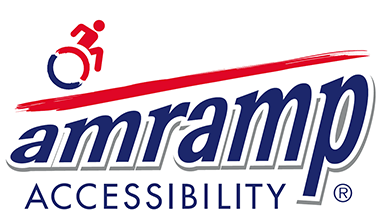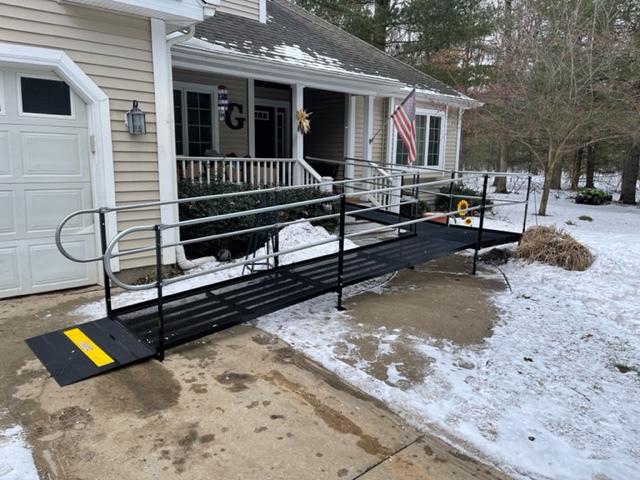There are so many seniors today who receive in home care from a dedicated caregiver, so that they may age in place in a familiar environment. While home health care allows many seniors to age for years in their home, many times their physical house is not as well-equipped to handle the aging process. More and more seniors require the assistance of wheelchairs, canes and walkers every day. However, the average home is not equipped to handle someone who relies on these mobility aides. With this in mind, family members, loved ones and caregivers need to step in and attempt to make these homes more handicap accessible.The Importance of Home Accessibility
While improving a home’s accessibility may sound like a large undertaking, it can actually be more affordable than many families assume. Updating a home to be more handicap-accessible can not only improve the daily quality of life for seniors and their caregivers, it can prevent the number of falls and accidents that occur in the home. Even for seniors who only need a walker or a cane, obstacles such as steps and stairs can be a major trip and fall hazard, and lead to serious injuries and trips to the emergency room.
Some of these home improvements are rather simple, while others can be quite complex and require construction and permanent home improvements. Depending on the type of home modifications there are different sources of financial aid, Medicare benefits, loans, non-Medicaid government assistance, non-profit grants and other financial offers that can help disabled seniors and their families pay for these important home modifications.
Making Home Changes
In order to make a home truly handicap-accessible, there are several changes that need to occur. These changes can go a long way in improving the safety and functionality of any senior’s home and make their home care experience much better.
The Entrance
The first and most important place to make accessibility improvements in the home is the entrance. After all, seniors should be able to easily get in and out of their home without feeling like it is a major challenge. A wheelchair ramp is the best addition for any senior who needs a mobility aide, even if they aren’t in a wheelchair. This ramp should be made of a non-slip material, should be wide enough for the senior to move comfortably through the space and it should have handrails, if possible.
However, not every home entrance has the space for a wheelchair ramp. In situations such as this, there are space-saving vertical platform lifts that can help seniors safely get in and out of their home, even with steps in the way.
Doorways
Doorways can be extremely challenging for seniors who are in wheelchairs or who must use large, wide walkers to get around. As doorways are typically some of the most narrow spaces in the home, sometimes seniors can get stuck when trying to navigate these small spaces.
Floors
The floors in a senior’s home can provide a major safety hazard, especially if their home is mostly covered in carpeting and rugs. Tile and hardwood flooring is typically best for seniors in wheelchairs. In addition to swapping out the flooring, it is important to alleviate any major dips, bumps or humps in the floor as well as exposed cords that may cause potential fall hazards.
Doorknobs
Something as simple as a doorknob may not seem like a major home hazard, but it can provide accessibility issues for some seniors. Automatic door openers can help seniors stay mobile and independent in their own homes and prevent them from accidentally getting trapped in a room.
Stairs
For seniors with mobility challenges, nothing in the home presents a bigger challenge than stairs. Sometimes, it is possible for caregivers to move everything the senior would need to the main floor of the home. Other times, this is not possible. In situations where stairs cannot be avoided, it may be smart to add a vertical platform lift of stairway lift in every staircase in the home. This allows seniors to have full accessibility and independence in their own home if they struggle to use the stairs on their own. These lifts, which are great options for seniors in wheelchairs as well as seniors in walkers, should swivel so the senior can safely get in and out of the lift on their own.
Kitchen
Depending how much seniors use their kitchens, different adjustments can be made in this space to keep it more accessible for wheelchair-bound individuals or those using walkers. Ultimately, the best thing to do is to make sure that all everyday items such as snacks, water, cups and dishes are within reach so that the senior does not have to reach far to access everyday items.
Bathroom
The bathroom is often hailed as one of the most dangerous rooms in the home for seniors. Falls do tend to happen in the bathroom, but the good news is, there are plenty of products on the market that are designed to help make home bathrooms handicap accessible. Hand rails are of course the most important addition, especially around the toilet. Fortunately, there are products that are designed to add this support to virtually any type of bathroom, no matter what the layout can be.
Adding sink accessibility is also important for seniors in wheelchairs. Many times, this can be remedied with a simple vanity replacement to make the entire sink easy to access for seniors who may be chair ridden. Finally, there is the shower. Shower seats and flat-entry showers can help seniors with walkers and with wheelchairs easily get in and out of the shower with the help of their home caregiver.
Simple changes in the home can go a long way in making any space more handicap accessible for seniors. Safety is of the utmost importance for any senior receiving care in their home, especially those that need mobility aides. Setting the home up for success with these improvements will only help ensure the senior’s continued safety and wellbeing.





